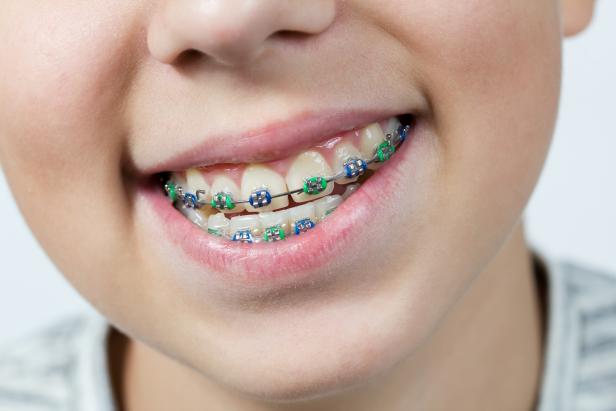Parenting Win of the Week: A Mouth Full of Metal
Your child's orthodontia journey may start sooner than you expect.


blazic27
There are rites of passage that we remember about childhood. A vivid one of mine is orthodontics…and not in a good way. I am super happy with my straight teeth now, but getting there took oral surgery, braces twice, retainers, and Invisalign two times as an adult. Needless to say, maybe something didn’t go exactly right with my childhood orthodontics OR I decided a retainer wasn’t important enough to wear in college OR my teeth shifted as I got older. Regardless, I now wear my retainers each and every night without fail.
But this isn’t about me. Believe it or not my youngest son (7) just started me on the parental journey into orthodontics. My oldest isn’t far behind, but they have very different issues and it was important for earlier intervention.
So far, we have tackled the expander and recently, we added in a headgear before moving on to braces.
My son has taken it with such grace even though I cringe at every step. But the best part? Technology has finally come far enough that they don’t need the dreaded impressions, they use a photo wand instead. I am surprised however that they still have to use the torture that is the headgear.
Age seven seemed really early to me for intervention, but according to my orthodontist and this article on the American Academy of Orthodontists website, seven is the ideal age for your first orthodontist visit. In many cases they’ll assess and tell you to come back after a certain number of baby teeth are lost (like with my older child), but in some cases — like this one — early intervention can prevent the need for invasive procedures or treatment down the line. The headgear is being used to correct his bite and if we waited too long, it could have been much more difficult — potentially even having to break his jaw.
The website says:
"The American Association of Orthodontists recommends children get their first check-up with an AAO orthodontist at the first recognition of an orthodontic problem, but no later than age 7. Around that age, children have a mix of baby (primary) and permanent teeth. An examination as permanent teeth take the place of baby teeth, and as the face and jaws are growing, gives the orthodontist a wealth of information. If a problem exists, or if one is developing, your orthodontist is able to advise you on whether treatment is recommended, when it should begin, what form treatment will take, and estimate its length."
The good news is that most orthodontists will see you for free for that initial visit and you should absolutely take the time to see more than one. You’ll find that some have more of an aggressive approach than others and it is really important to go with a doctor you are comfortable with because you will be seeing them A LOT.
As for the day-to-day, my son is a trooper. Our dentist recently recommended using a water flosser to help make it easier so we have been doing that. For both devices, the pain went away after a few days — thank goodness.
I am sure this will come up again when we enter the braces phase later this summer, but if your kid is around seven, it’s worth getting them checked. The best case scenario is "we’ll see you in a year."
YOU MIGHT ALSO LIKE:










.jpg.rend.hgtvcom.231.174.suffix/1699480866087.jpeg)




